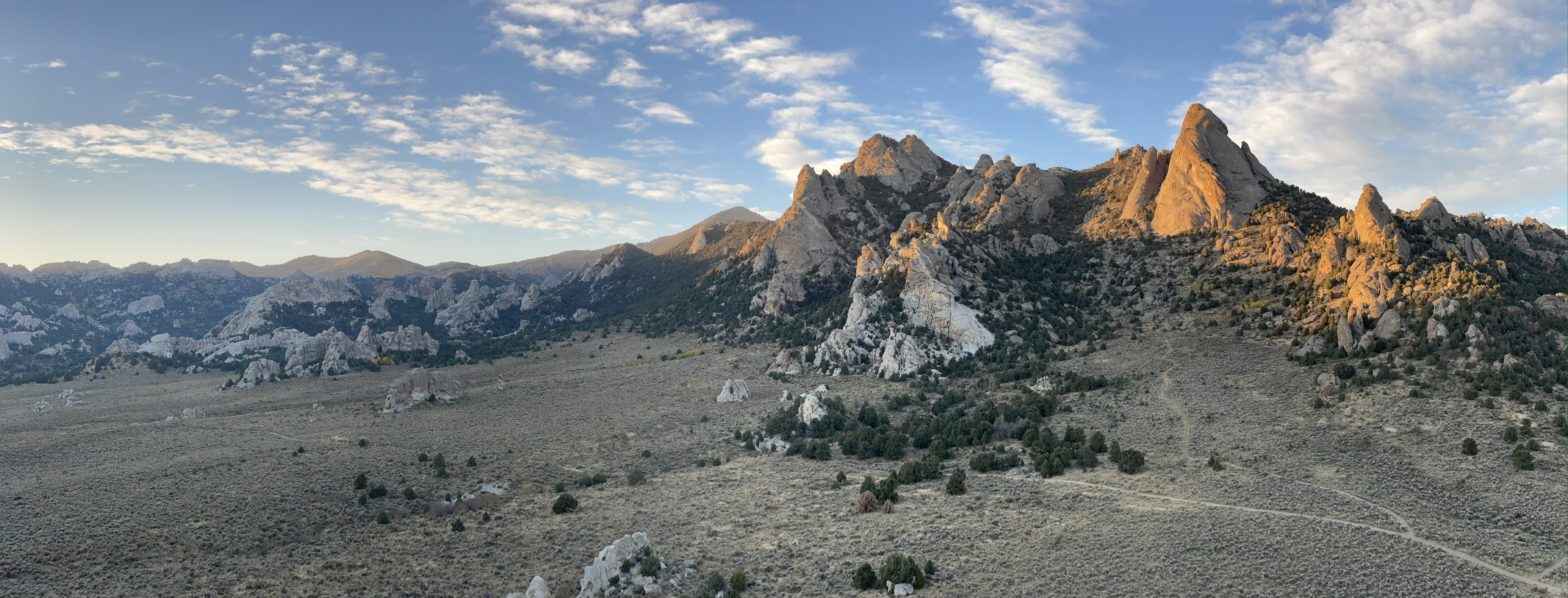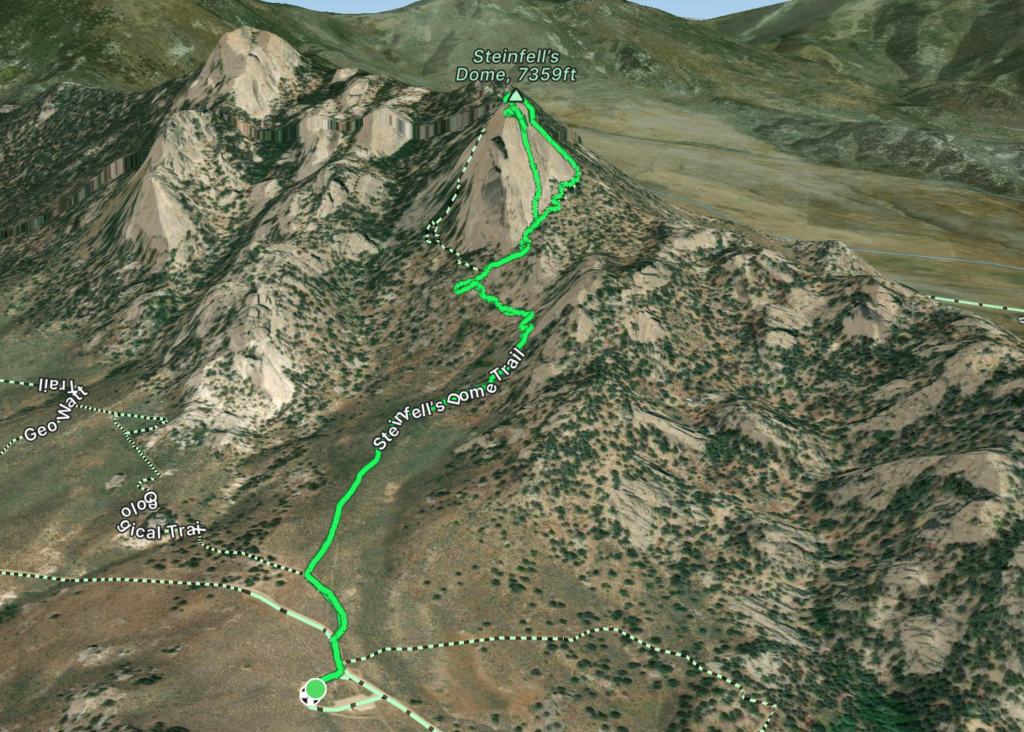
Elevation Gain: 336m
Distance: 3.51km
Total Time: 3 hours 46 minutes
Date: October 12th, 2022
Andrea and I were on our second day of climbing in City of Rocks and we had planned to tag on a nearby summit called Smoky Mountain for sunset that evening. I hadn’t done much research on it, but as we drove from the main cragging area around to the supposed trail head I sifted through some recent reports. As we wrapped around to the starting point, I realized that this hike was actually going to be a bushwhack through forest for several kilometers. Adding to that, the service road that would get us close enough to the summit for sunset was in terrible shape and we couldn’t drive more than 50m of it. At this point, we resigned the idea of summitting and drove back to camp to find a nice rock feature somewhere to scramble up and watch the sunset.
Just in time, we found something near the Circle Creek parking area and made our way to the top. As the sun set, it focused a beautiful orange glow onto a striking granite tower nearby on our right. I’d seen this tower from most points in the park throughout the day, but it looked like a committing climb from all angles. Now however, it really captured my imagination and armed with some new found cell signal, I started to look into it more.
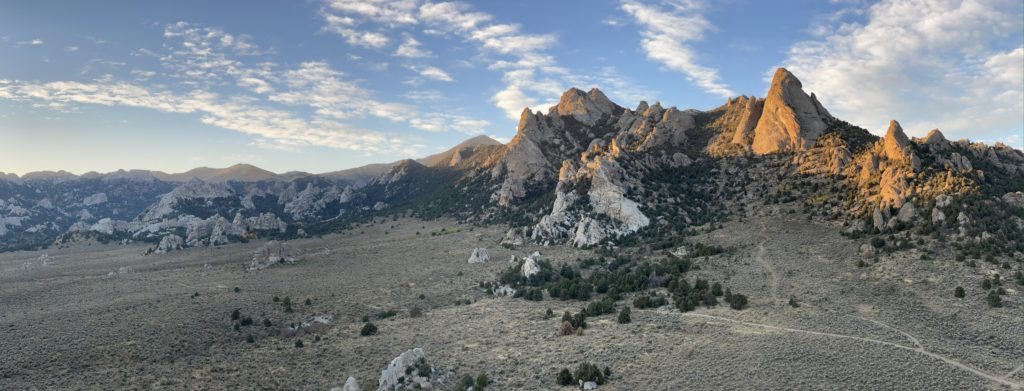
Known as Steinfell’s Dome, it stands at 2243m but boasts no more than 90m of prominence (some sites say much less). However, it requires technical climbing by any side to reach the summit. Unfortunate for us, as we had to leave by mid-day the following day and a committing multi-pitch trad route was simply going to take too long. Out of curiosity anyways, I browsed through the all the routes and discovered a very interesting route called Sinocranium. A fully bolted six pitch route with mostly 5.2-5.6 climbing and a single 5.8 crux. Two rappels to reach the base and what we gauged to be a 30 minute approach from the parking lot. The stars aligned! This could be easily done in a 4 hour window and so we committed to the route for the following morning.
On Wednesday morning we got up and at it; as the sun rose above the horizon. We were sleeping out of the car, so the usual morning faff occupied a fair bit of the preparation time, but we hit the trail around 9:30am. Two climber’s were already on the wall doing a separate trad route on the southern face. We followed the stream lined approach trail up to about 2000m elevation where it then forked off into more of a climber’s trail. Ample cairns guided us and thanks to some excellent MountainProject beta, we were able to locate the base of the climb with exceptional ease.
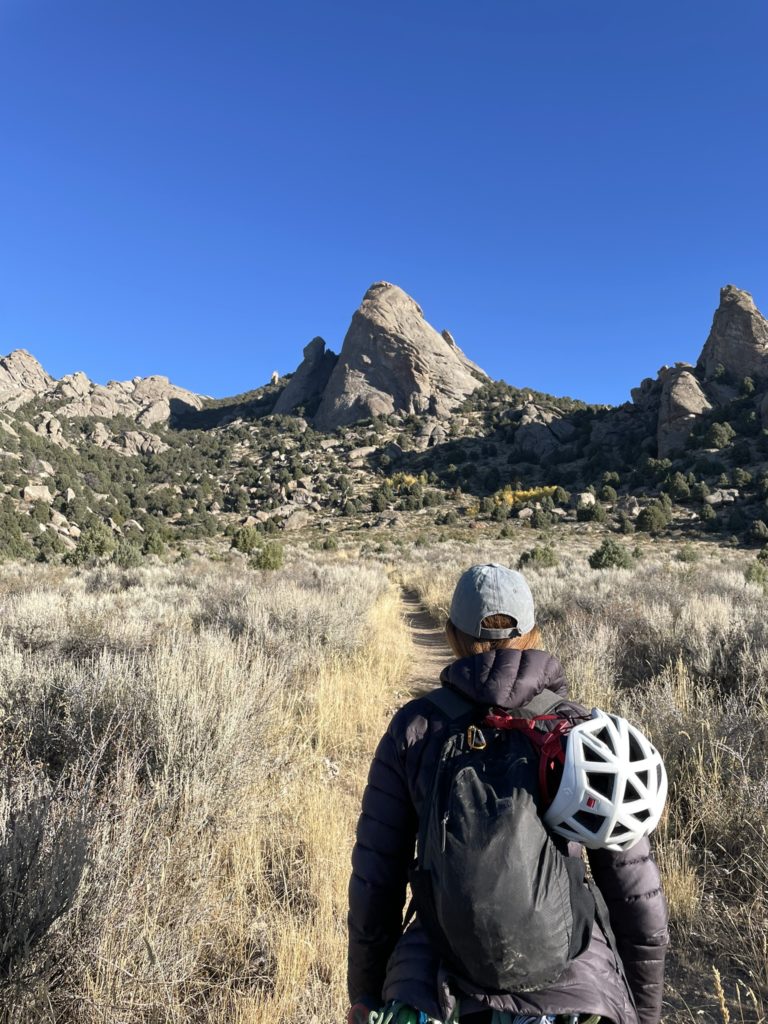
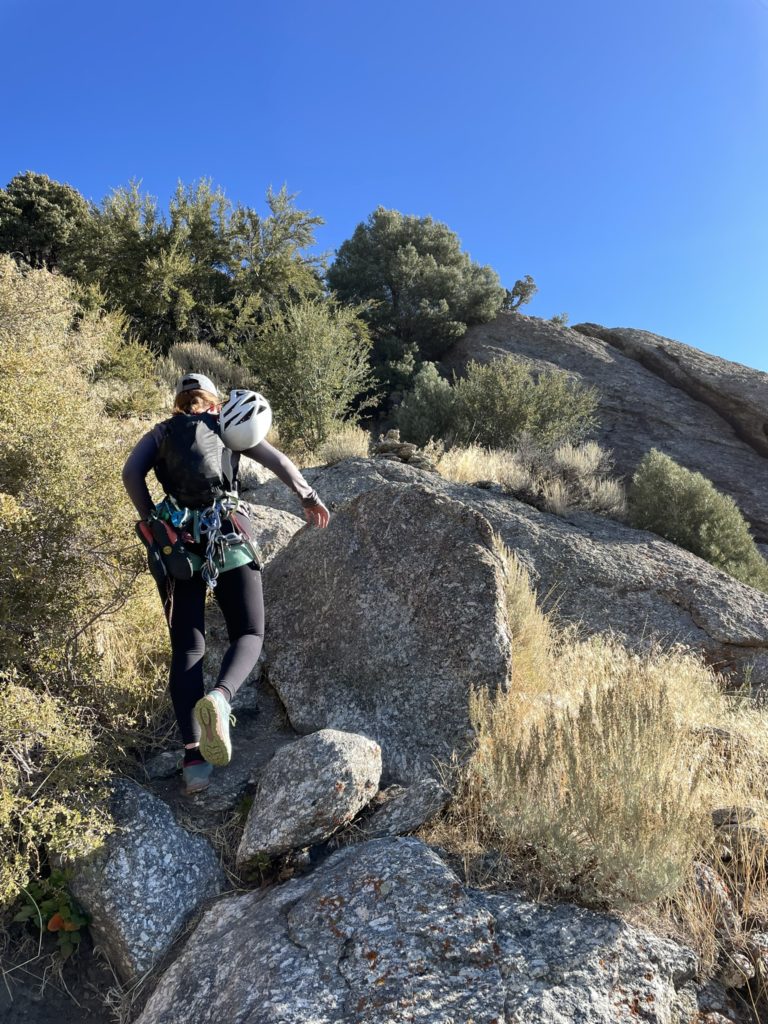
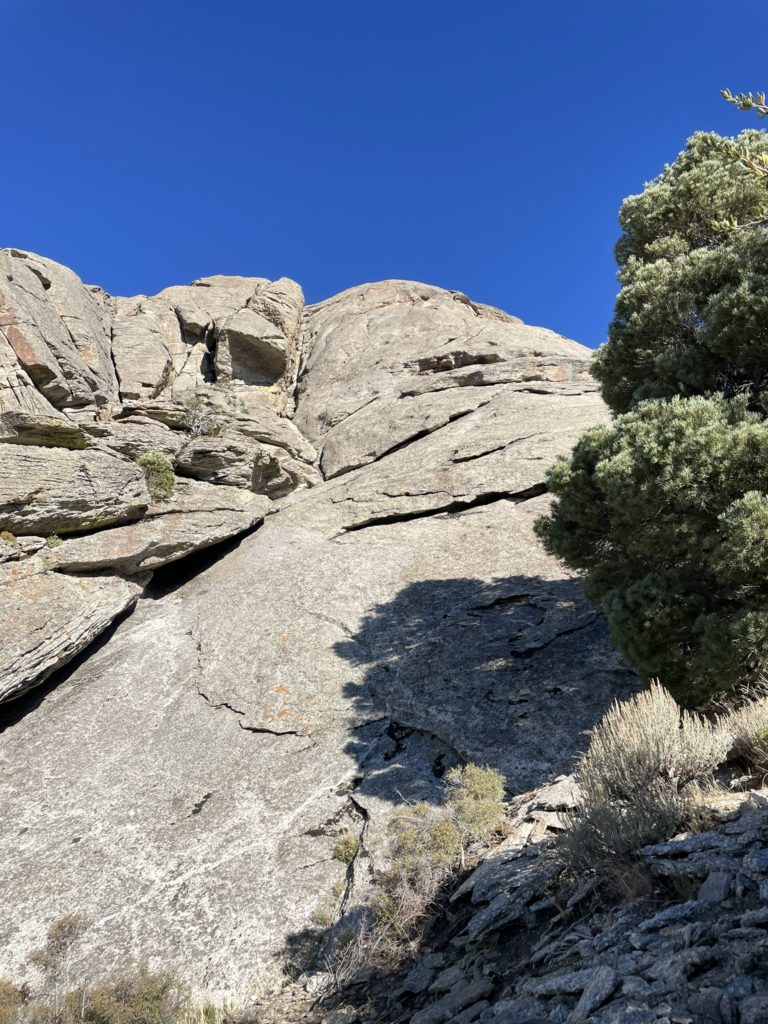
We transitioned to climbing gear and then Andrea set off to lead the first pitch. The first 20m or so were on very low 5th class slab and Andrea was practically able to walk up, placing quick draws as often as she felt comfortable. We originally thought about linking pitch one and two with our 70m rope, but by the time she reached the anchor the rope drag was already diminishing returns. Andrea put me on belay below the bulge/roof at the top of pitch one and I followed up without issue.
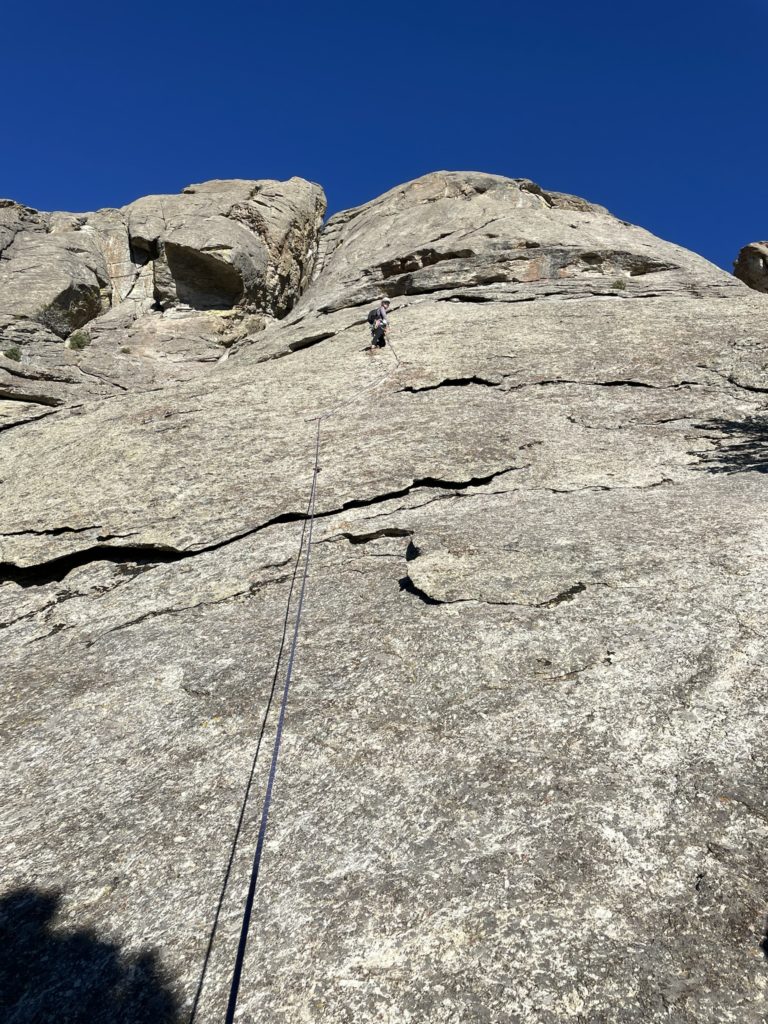
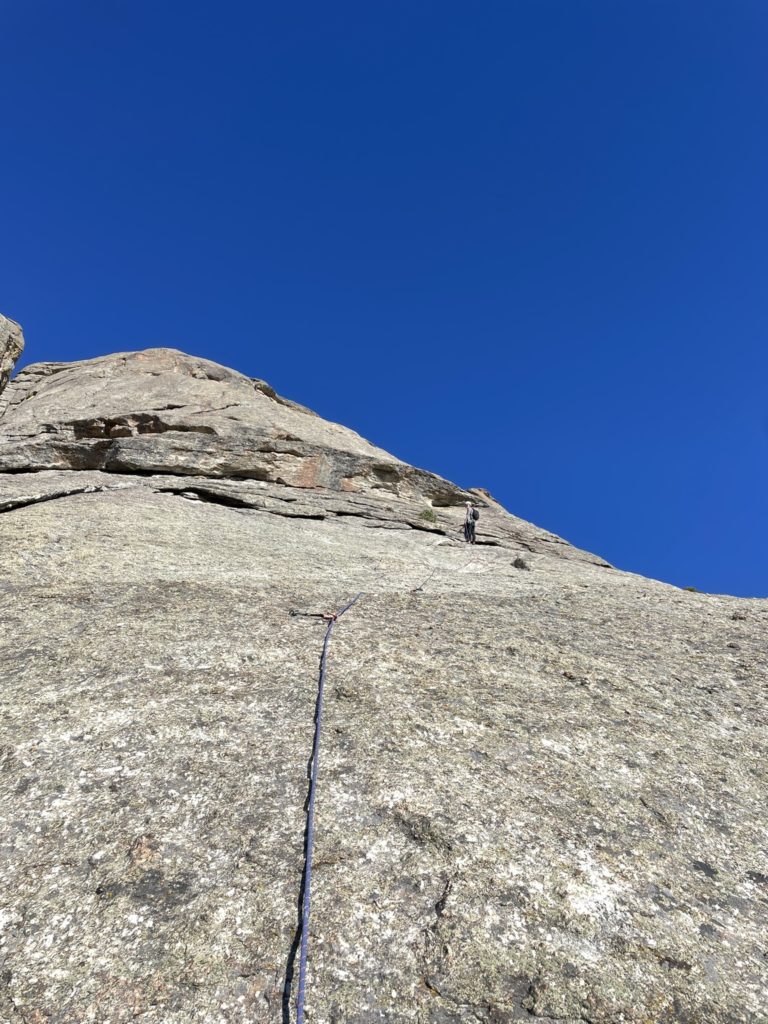
I swung pitches and traversed climber’s right around the vertical bulge to a steeper section of slab. Foot holds were everywhere you wanted them and I found my way at the top of pitch two quicker than expected. Andrea came up next in a cruise-y fashion and we swung leads again for another round of straightforward slab ascension. I came up on second and now were positioned underneath the 5.8 crux pitch. Here, the route changed abruptly from slab to a vertical headwall rising at least 15-20m above the modest aspects below. A quartz/crystal seam ran vertically through the headwall offering a weakness in the rock for one to ascend up through.
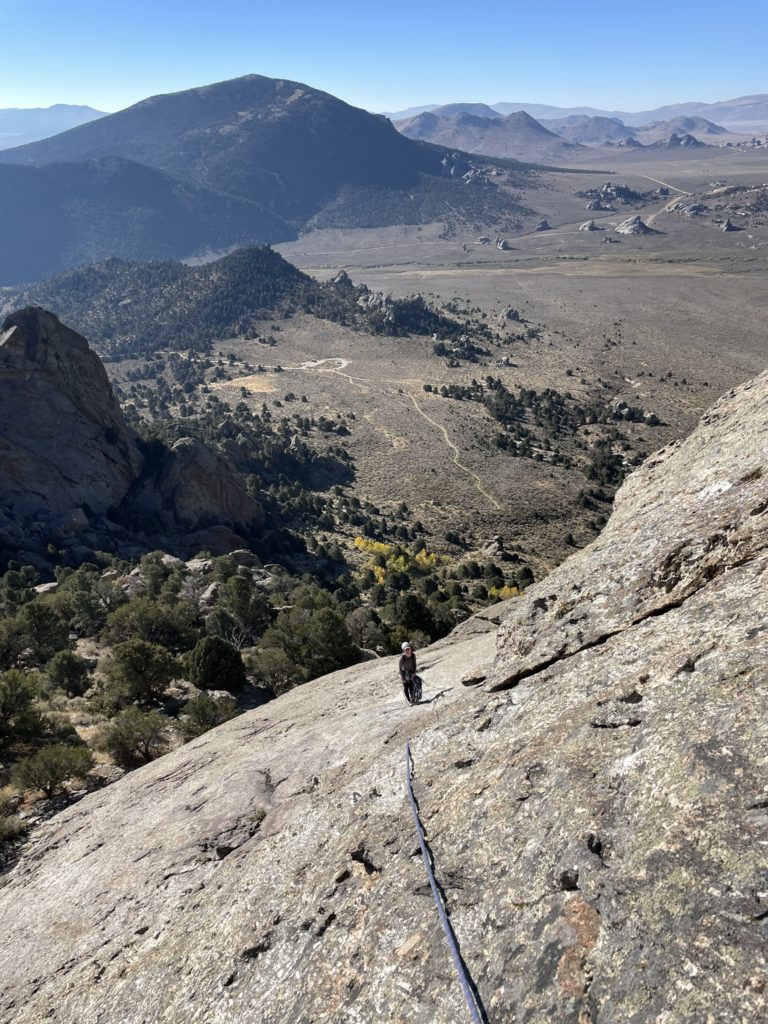
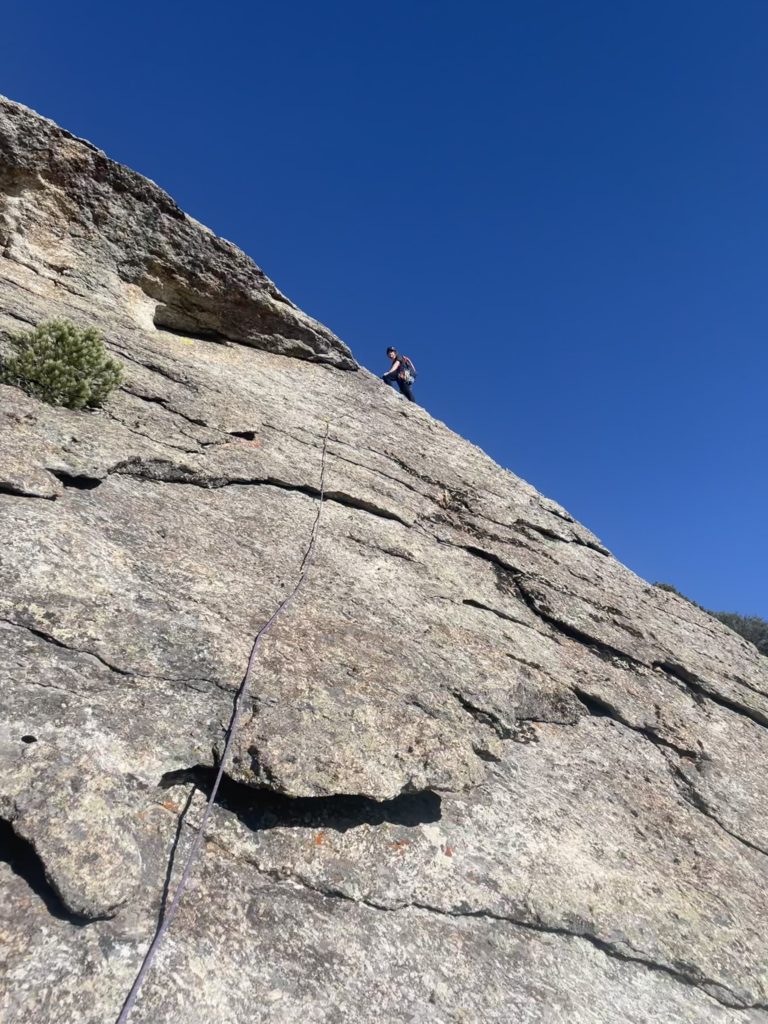
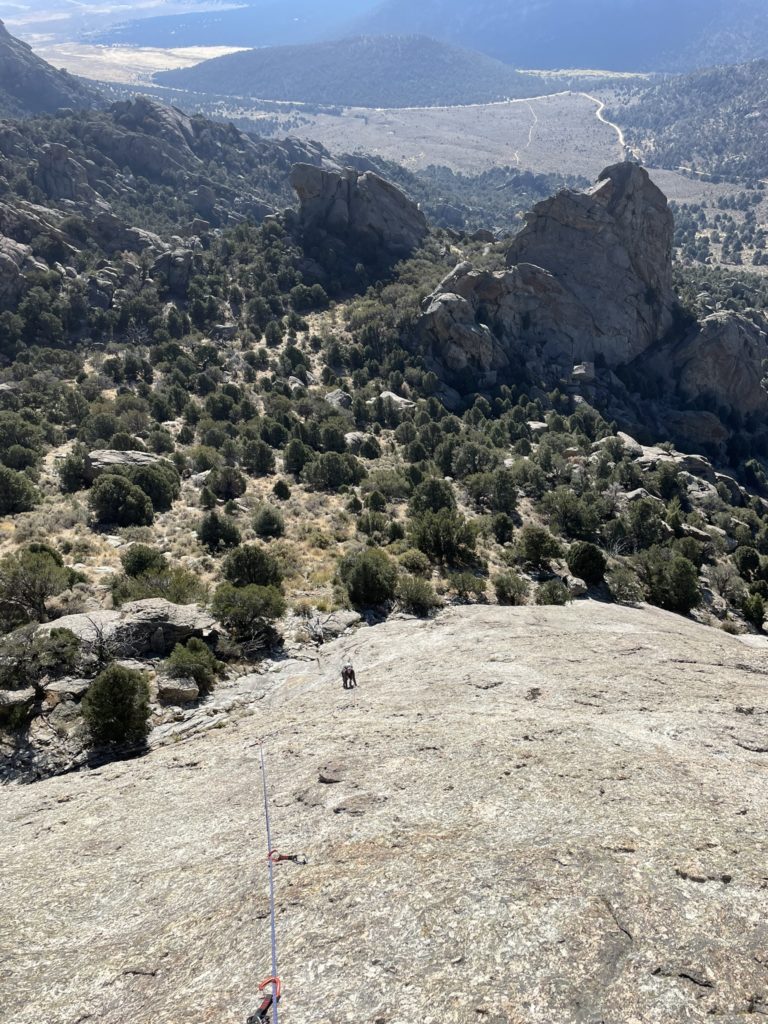
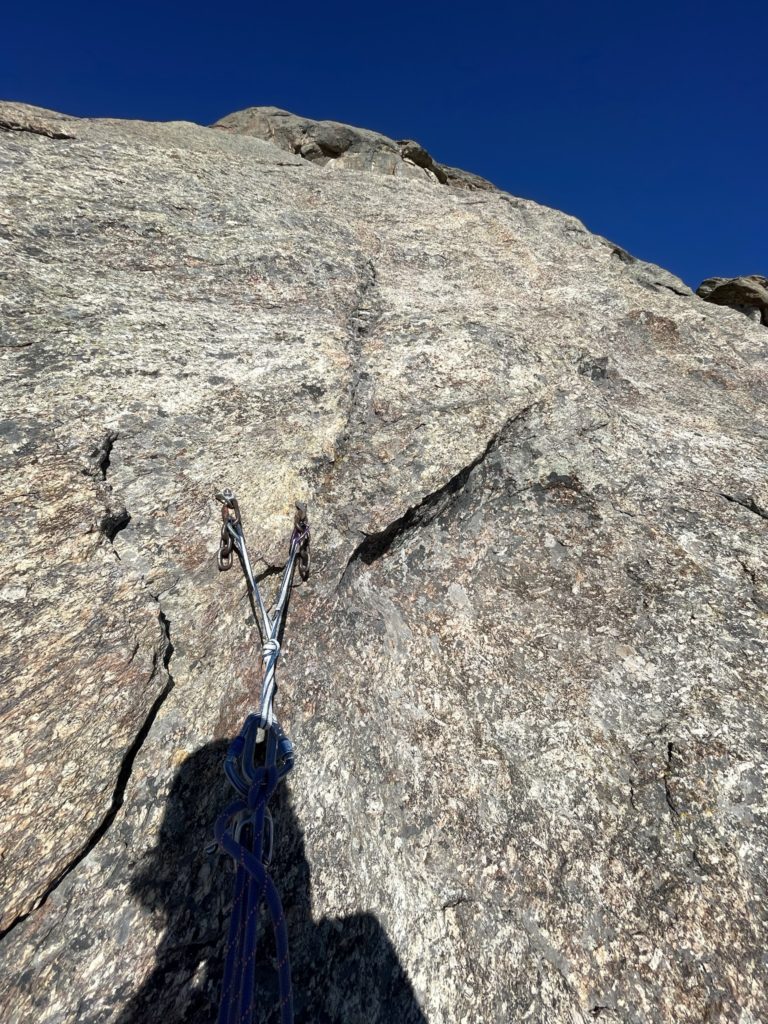

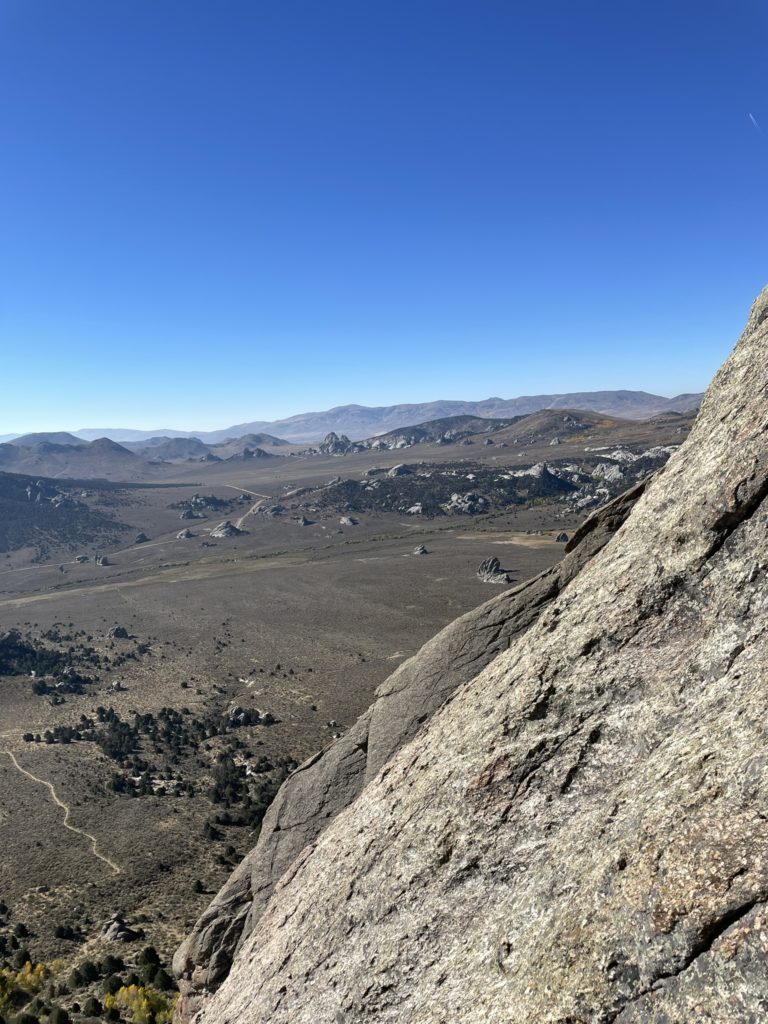
I walked about 10m up the remaining slab from the top of pitch three and then positioned myself directly beneath the headwall. Here I noticed another anchor and that probably would have been a better place to belay from. We didn’t know about it beforehand and it was too much faff to switch now. I pulled myself up into the lower section of the crystal seam and then stemmed my feet out to a slabby face at right. Looking up I saw the route veered right under an overhanging bulge with a very awkward set of layback and face holds to get out of the overhanging section. I committed to the layback sequence pulling hard and reaching high to locate the next positive set of holds. Few were to be found, but with some careful foot placements I was able to offset that and land myself above the bulge and in a better position. Next was just basic face climbing on a gradually easing vertical face to the anchor.
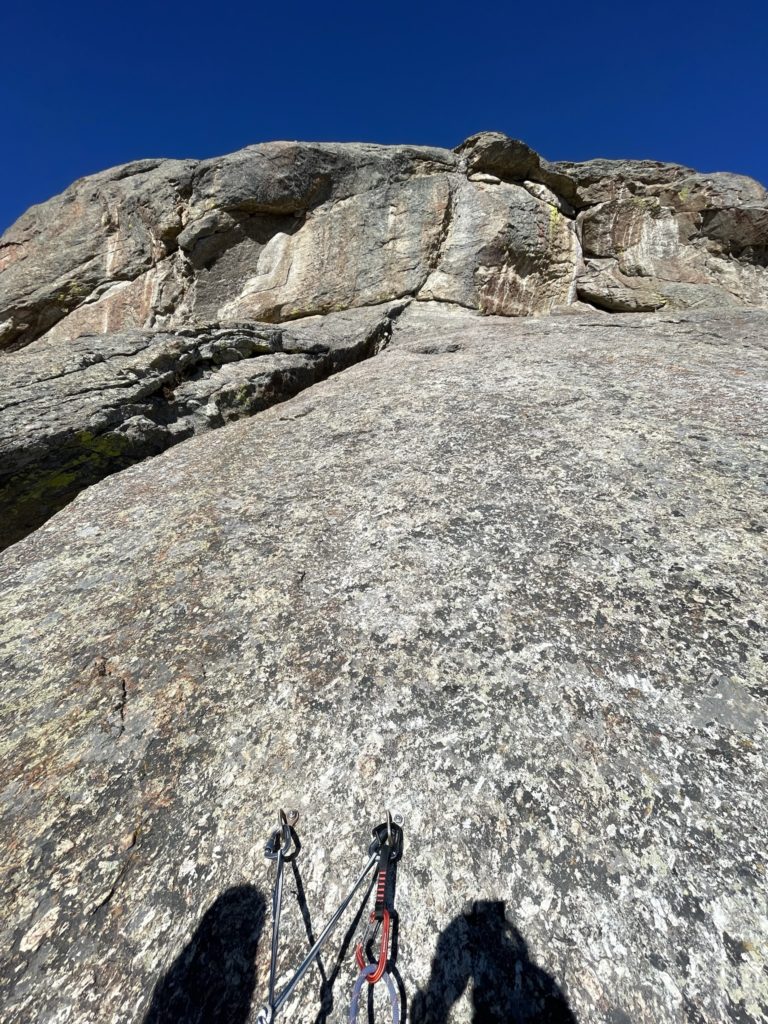
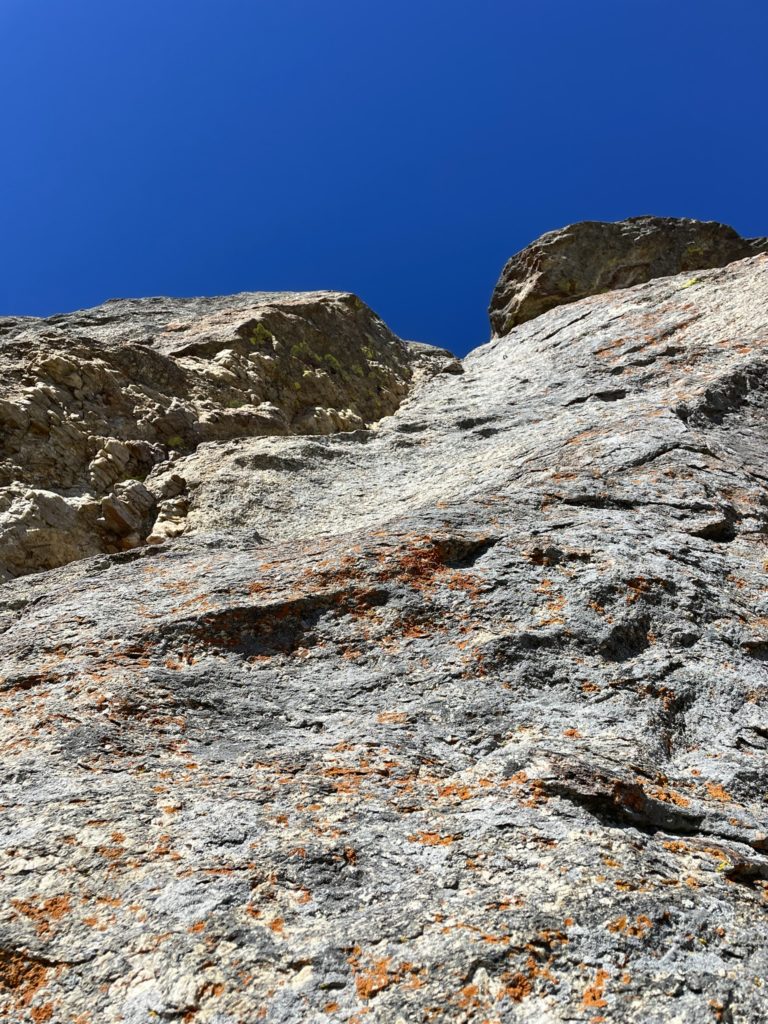
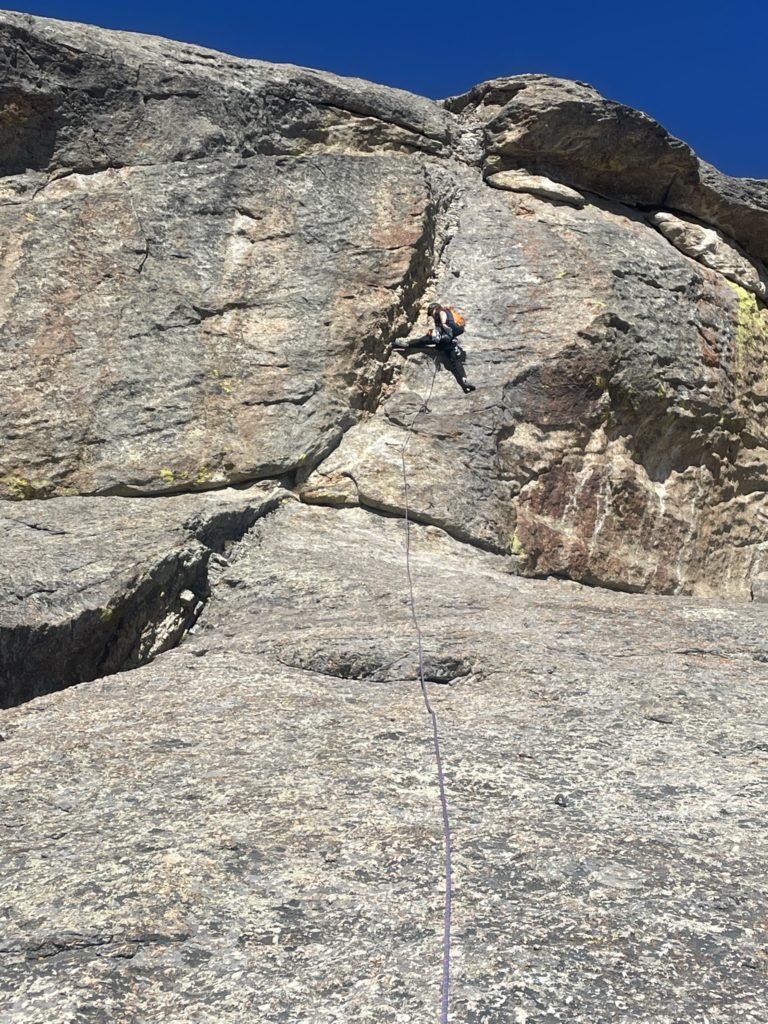
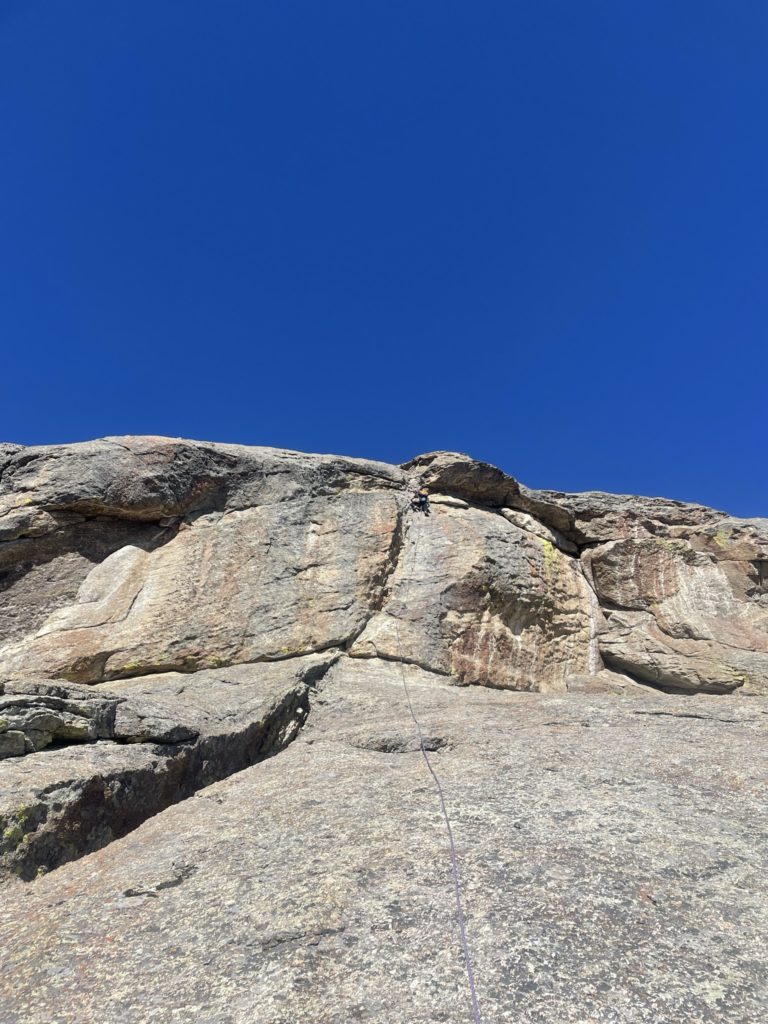
I have to say, by Squamish standards this would be really stiff for 5.8, but I’m still getting used to the American grading style and so will leave my input at that. Despite the sometimes challenging moves, the route was very well protected. I found bolts every meter or so and that made the pitch much easier on the mind. Andrea came up afterwards and found similar challenges to me, albeit requiring different beta thanks to our height differences. She made it up cleanly though and then lead the final pitch to the summit. A short and straightforward slab section to the final anchor.
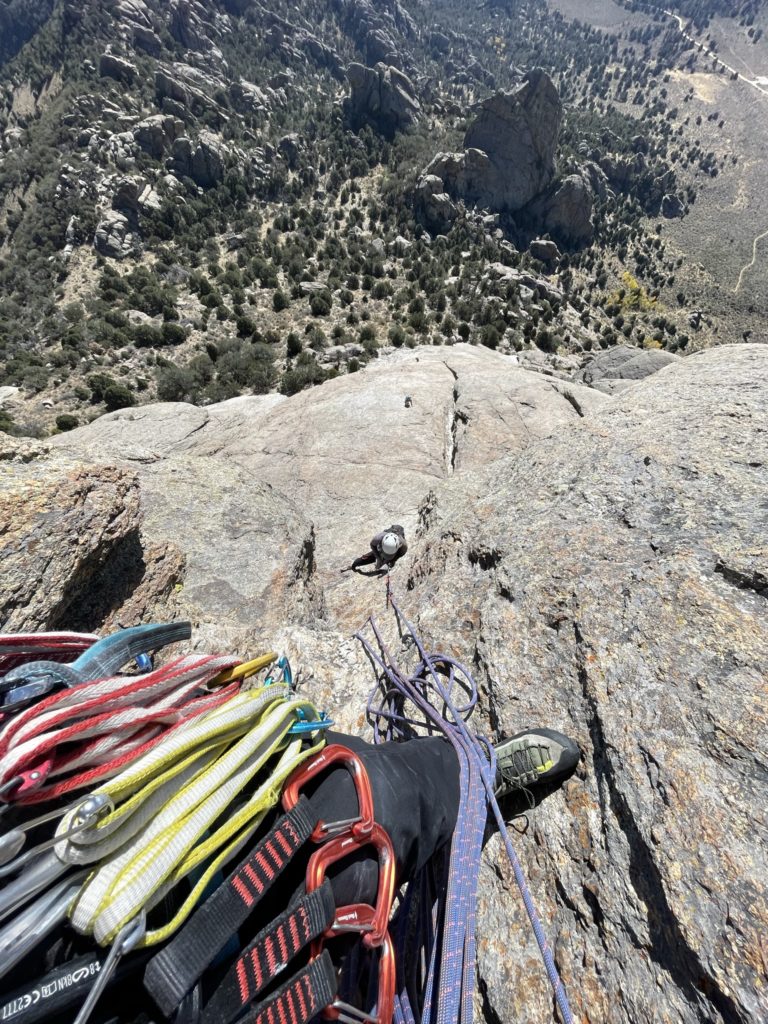
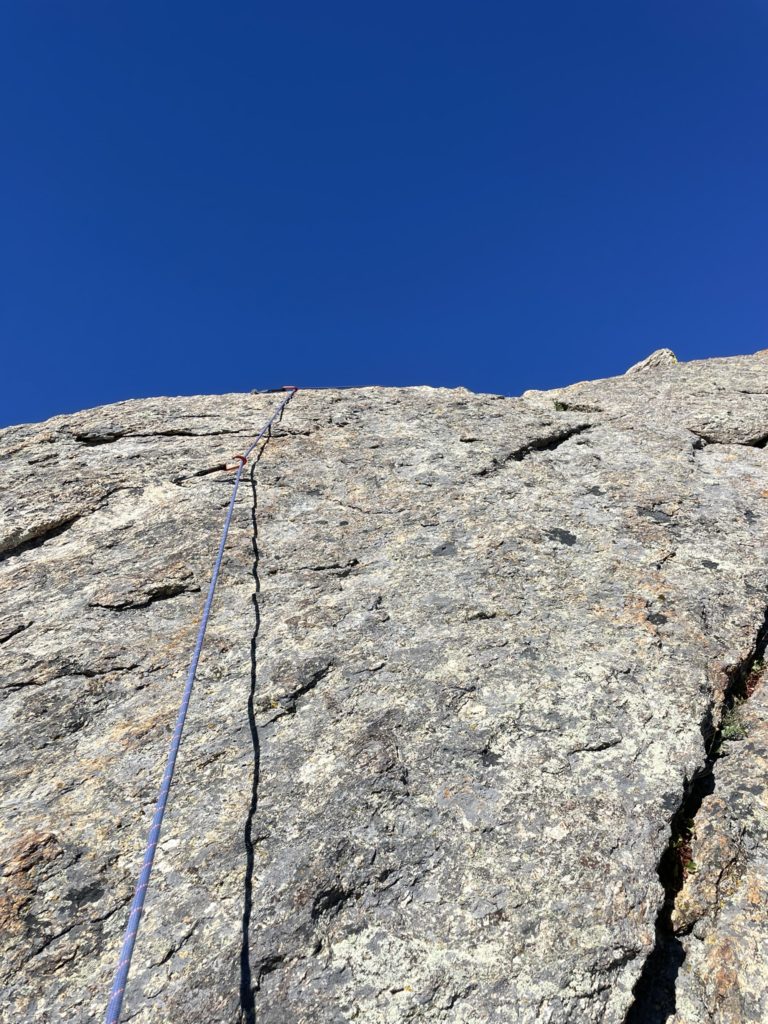
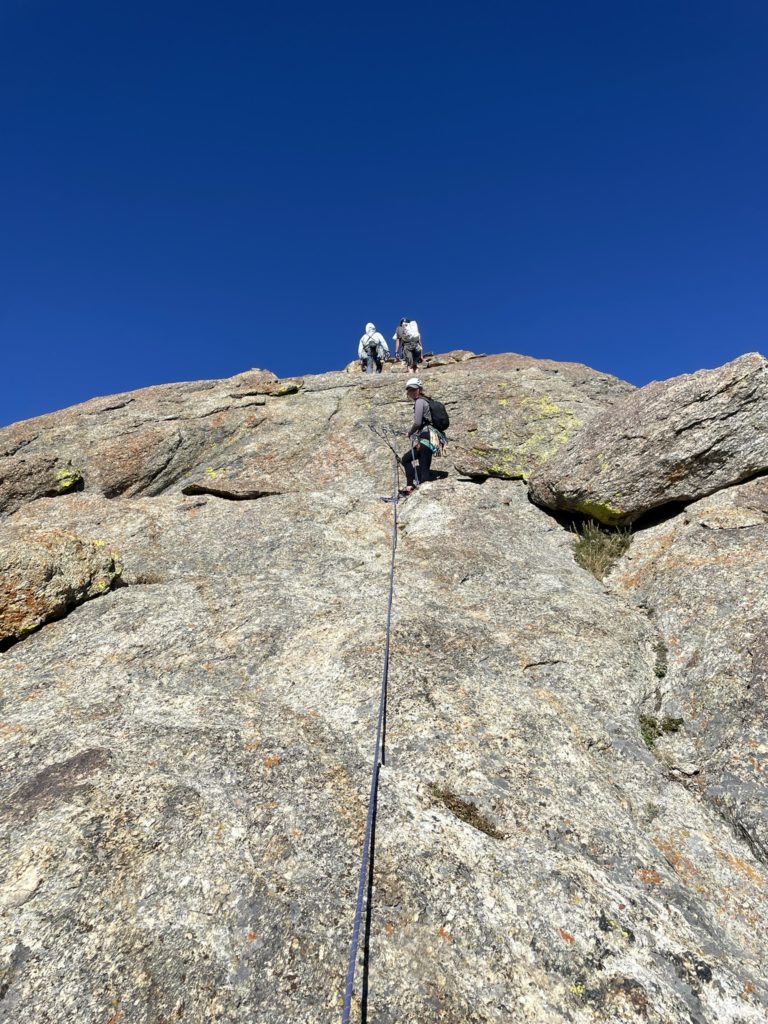
From the top of the final pitch, it was just a short scramble up to the summit. The two climbers we saw on the trad route were up there as well, but already starting the first rappel. That was handy, as it saved me having to locate the anchor. Andrea and I hung out on the summit while the pair finished up the rappelling and then we followed suit. The first anchor was bolted with rap rings and I rappelled first to the next anchor. It was in a bit of an awkward position, located behind a rock at skier’s left in a hanging stance, but I made it work. Andrea came next and then we tossed the roped for a final time down the north east gully. I had read a 70m rope was key for the rappel and when I reached the bottom I saw why. A 60m, no doubt would work, but with the 70 we avoided a tedious gully down-scramble and landed right at the top of the climber’s trail.
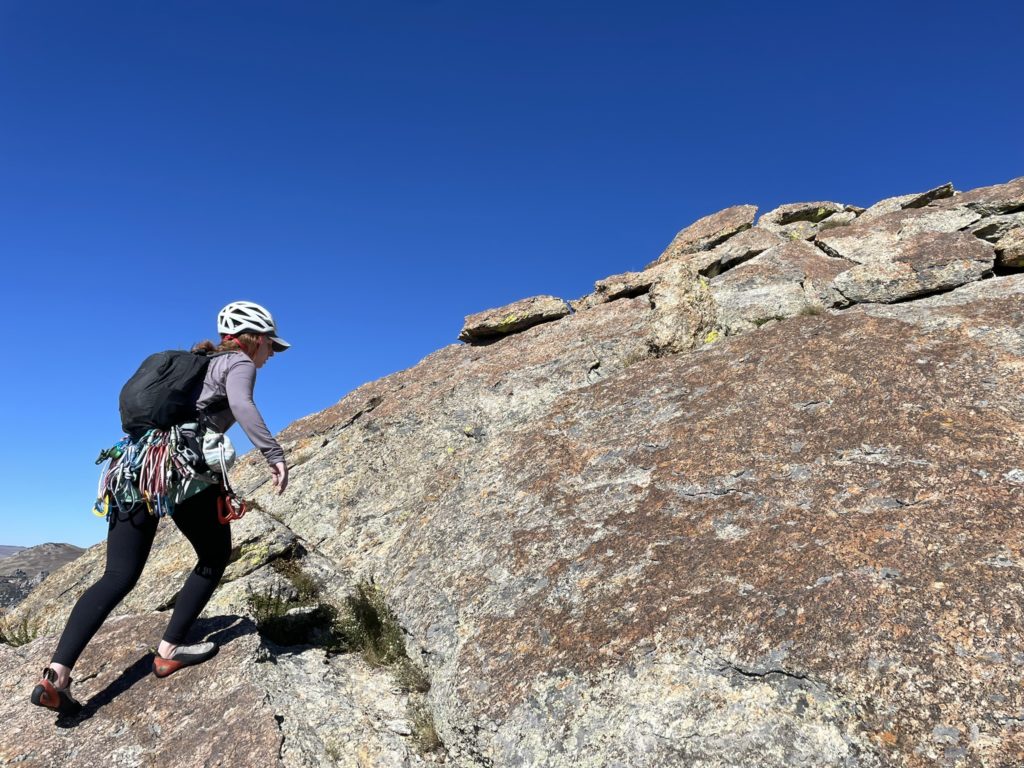
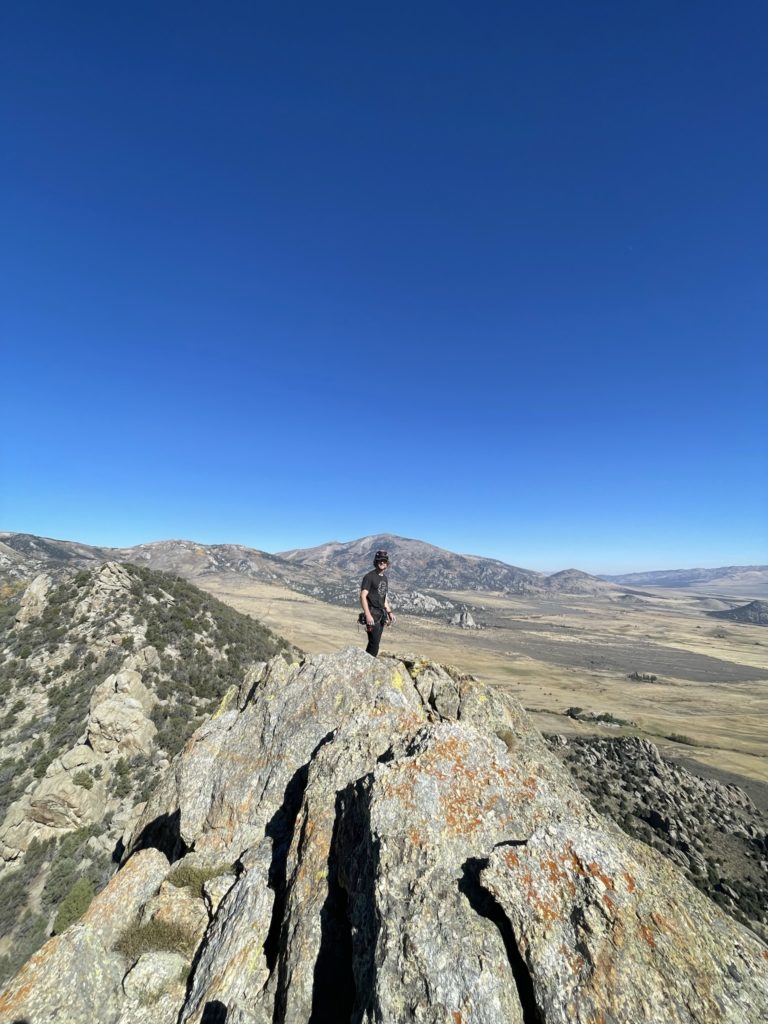
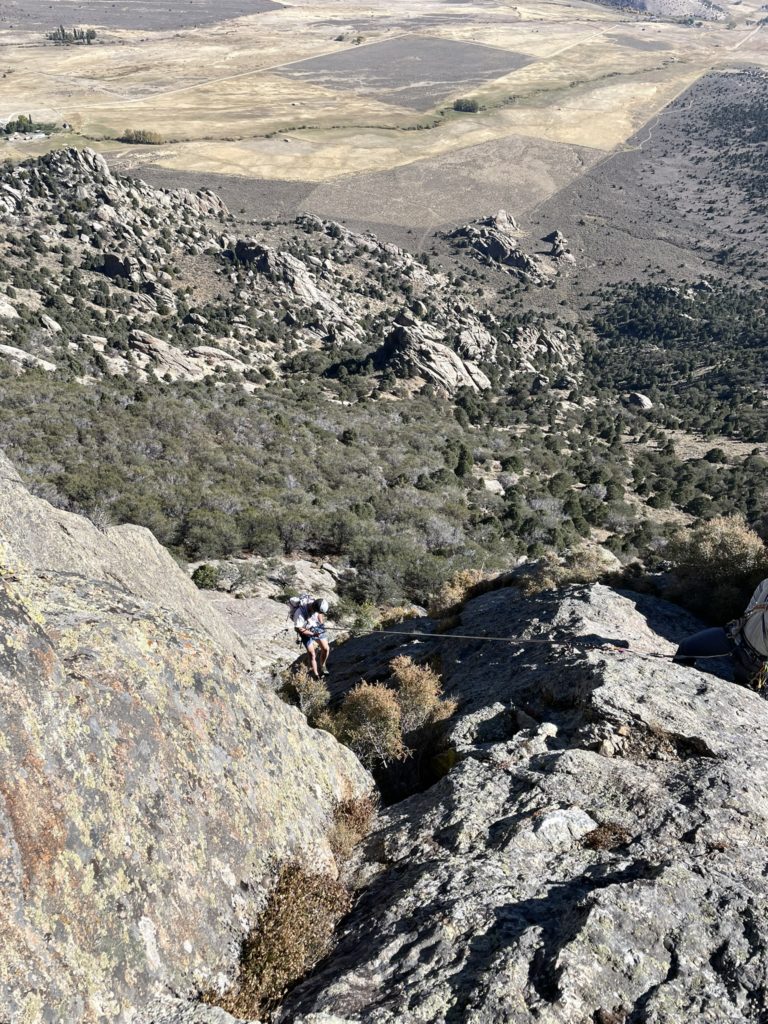
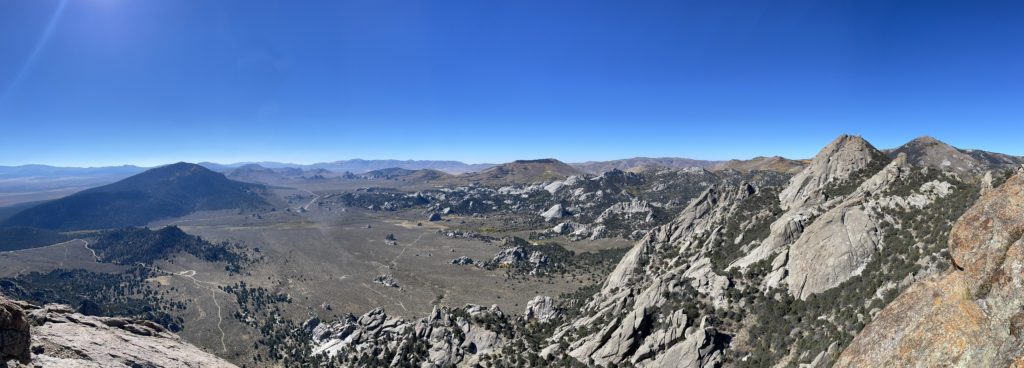
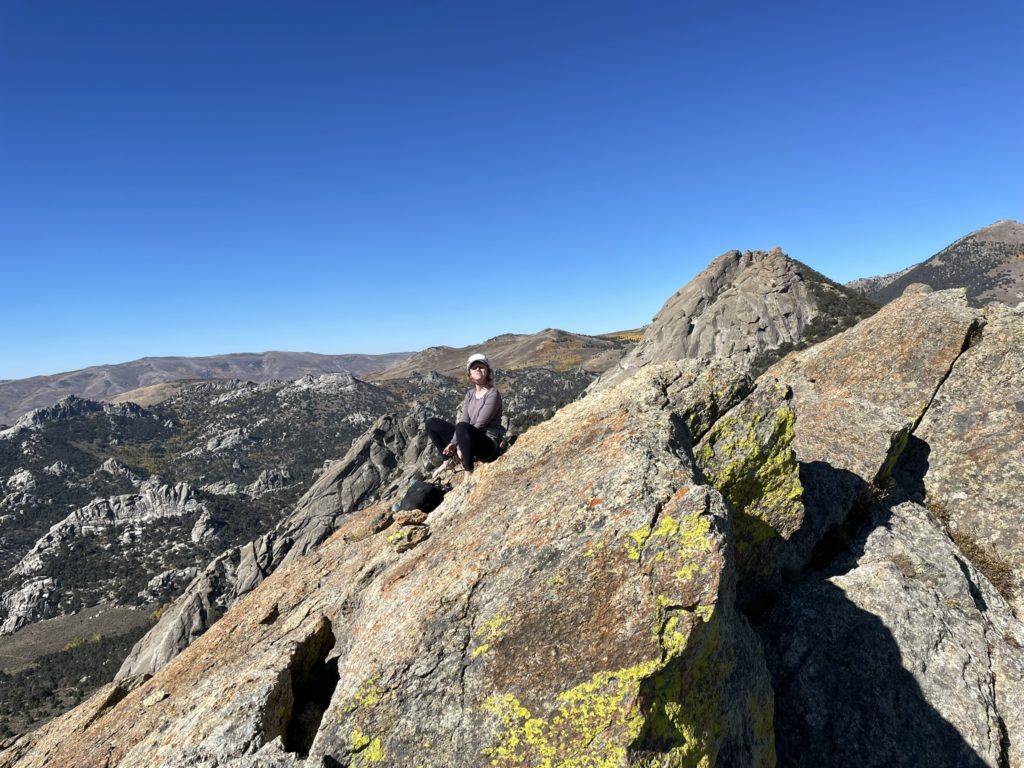
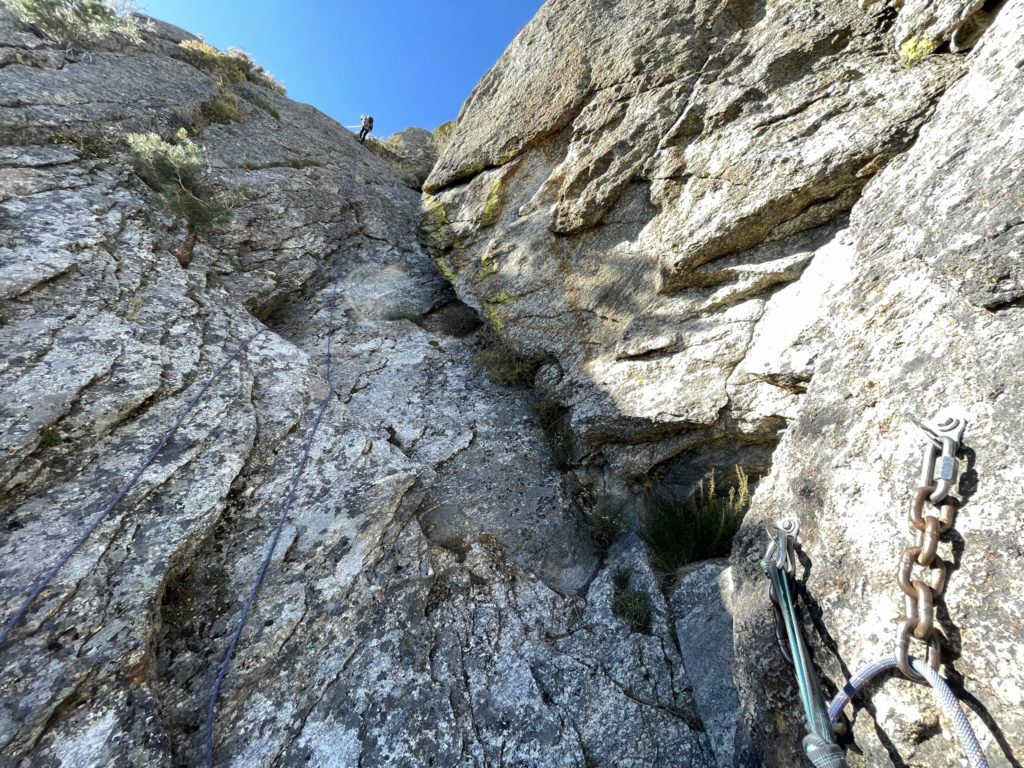
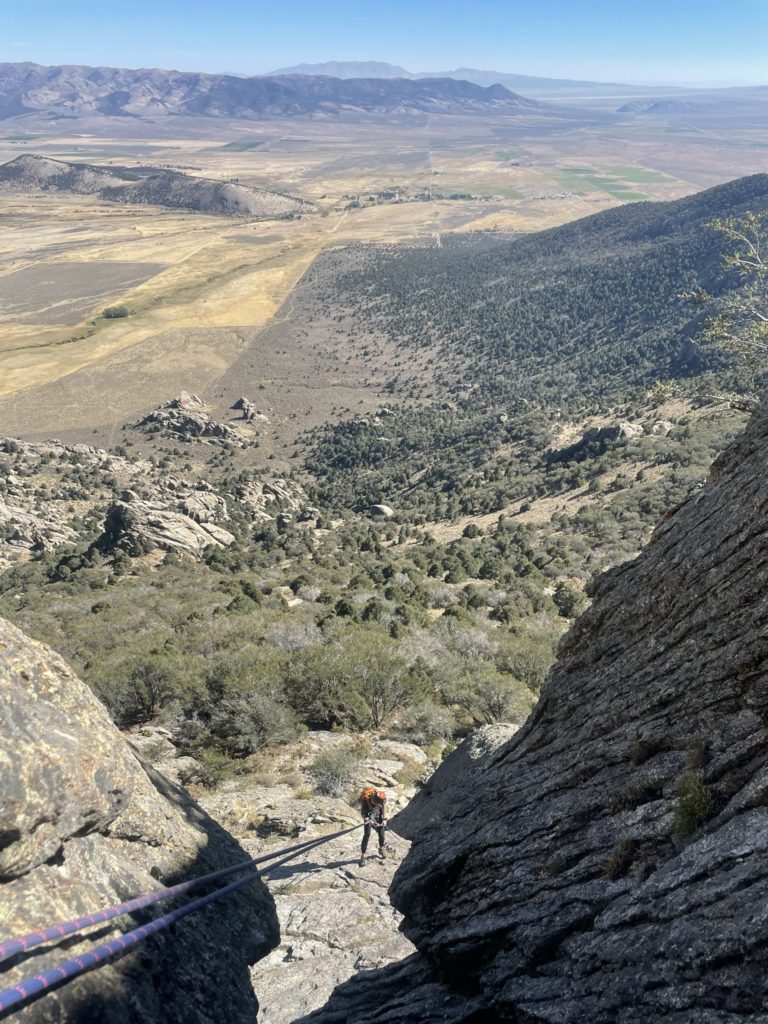
Once we were both down, we followed the short climber’s trail back round to the start of the climb and then reversed course on our existing tracks back to the parking lot. We reached the car after 3 hours and 45 minutes from the time we left. Exactly what we were hoping for as we needed ample time to drive down to Utah for the next part of our journey.
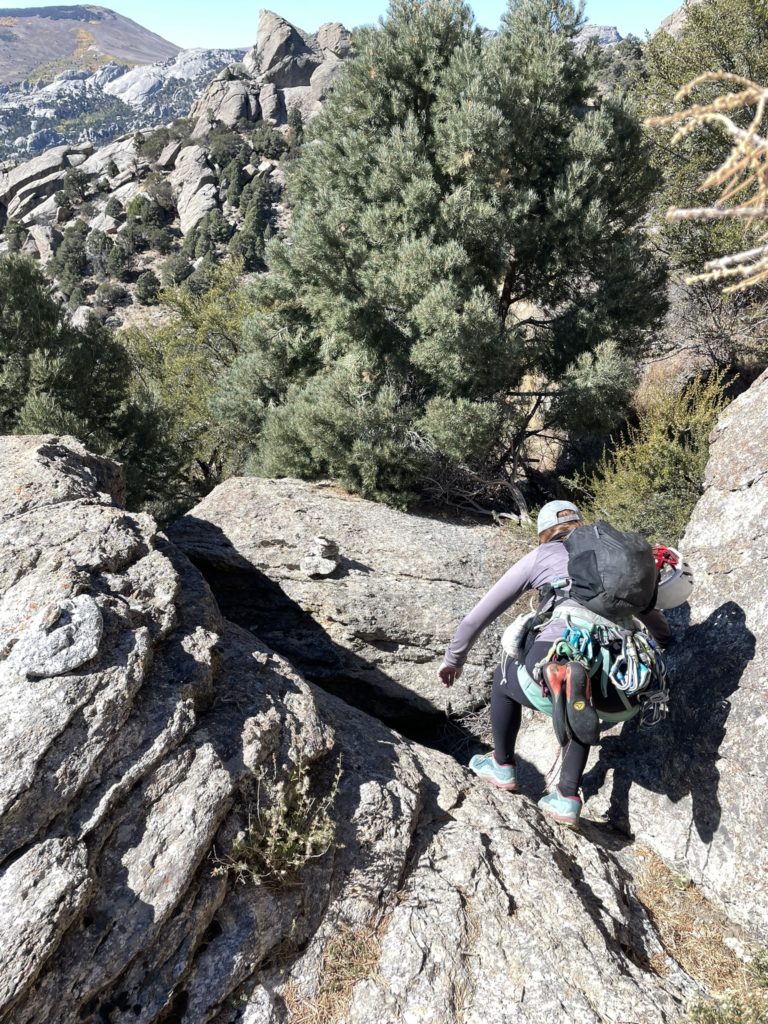
I can absolutely see why this is such a popular route in City of Rocks. It’s rare to have a fully bolted multi-pitch all the way to the summit and an easy route at that. The 5.8 pitch was the only section that bared it’s teeth on the climb, but with so many bolts one can even aid the entire pitch if they need to bypass the crux. We were hoping for an easy, short outing before our drive and we got just that. Definitely a must do if you’re in City of Rocks.
Gear Notes:
- 70m rope
- 9 alpine quick draws, 12 sport draws
- Slings/lockers for anchors
We brought enough quick draws to link pitches 1+2 and 3+4 but ultimately just pitched it all out. I think 12 quickdraws is sufficient for any of the pitches and on the slabs I skipped several bolts due to the frequency of their placement. The 70m rope was worth it for the rappel, but a 60m will be fine if you don’t mind down scrambling. If you don’t link any pitches 60m will be more than enough for the actual climb as well.
